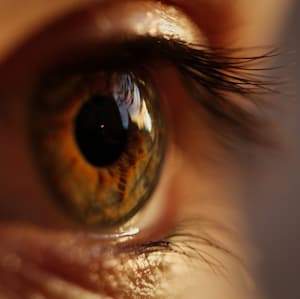Vision Loss in Eyes with Diabetic Macular Ischemia Linked to Presence of DRIL
Eyes with DRIL were associated with more visual function loss and retinal blood circulation alterations compared to those with subfoveal ellipsoid zone loss only.
Photo Credit: Marc Schulte, Pexels

A team of investigators from Moorfields Eye Hospital recently investigated the relative effect of disorganization of the retinal innel layers (DRIL) and ellipsoid zone loss on visual function in eyes with diabetic macular ischemia.1
Their findings suggest that, in patients with diabetic macular ischemia and Snellen visual acuity of ≥20/160, eyes with DRIL were associated with more visual function loss and retinal blood circulation alterations that those with subfoveal ellipsoid zone loss only.
Led by Wei-Shan Tsai, MD, MSc, the prospective, cross-sectional, observational study recruited patients with stable treated proliferative diabetic retinopathy without center-involved diabetic macular edema at the Moorfields Eye Hospital from December 2019 to November 2021. Inclusion criteria for participants were best-corrected visual acuity (BCVA) of ≥40 ETDRS letters (Snellen equivalent 20/160) with optical coherence tomography angiography (OCTA) evidence of diabetic macular ischemia in ≥1 eye.
Each eligible eye of the recruited patients were assessed for best-corrected visual acuity (BCVA), OCT, and OCTA metrics. The prespecfied OCT parameters were DRIL and subfobeal ellipsoid zone loss. Investigators used generalized estimating equations. The main outcomes identified for the study were the frequency of DRIL and ellipsoid zone loss, their relative contributions to vision loss, and their associations with microvascular alternations were evaluated.
The population consisted of a total of 125 eyes of 86 patients enrolled into the study. Of these participants, 104 (83%) eyes had a BCVA of ≥70 letters. The findings suggest disorganization of the retinal inner layers was more prevalent than ellipsoid zone loss (46% [58 eyes] vs. 19% [24 eyes]). Investigators found, on average, the presence of DRIL to have a more pronounced impact on vision, retinal thickness, and microvascular parameters compared to ellipsoid zone loss.
Multivariable adjustment revealed the odds of coexisting DRIL increased by 12% with every letter decrease in BCVA. However, there was no statistically significant association of subfoveal ellipzoid loss with BCVA, according to the findings.
In eyes with DRIL in the absence of ellipsoid zone loss, data showed the BCVA declined significantly by nearly 7 letters compared with eyes with no DRIL nor EZ loss (6.67 letters; 95% confidence interval [CI], -9.92 to -3.41; P <.001). However, if DRIL and EZ loss coexisted, results suggest the resultant BCVA was 13 letters less than eyes without these structural abnormalities (13.22 letters; 95% CI, -18.85 to -7.59; P <.001).
References
- Tsai W-S, Thottarath S, Gurudas S, et al. Characterization of the structural and functional alteration in eyes with diabetic macular ischemia. Ophthalmology Retina. 2023;7(2):142-152. doi:10.1016/j.oret.2022.07.010